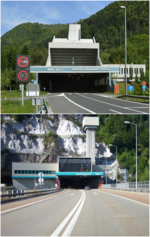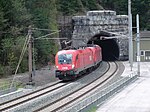Mittagskogel
KarawanksMountains of CarinthiaMountains of Upper CarniolaMountains of the AlpsTwo-thousanders of Austria ... and 1 more
Two-thousanders of Slovenia

The Mittagskogel (German) or Kepa (Slovenian) has an elevation of 2,145 metres (7,037 ft) aA, and is thus the third highest mountain in the Karawanks range, after Hochstuhl/Stol and the Vertratscha/Vrtača. It is located on the border between Slovenia and Austria.
Excerpt from the Wikipedia article Mittagskogel (License: CC BY-SA 3.0, Authors, Images).Mittagskogel
Normalweg,
Geographical coordinates (GPS) Address Nearby Places Show on map
Geographical coordinates (GPS)
| Latitude | Longitude |
|---|---|
| N 46.506666666667 ° | E 13.948888888889 ° |
Address
Kepa / Mittagskogel – žig
Normalweg
9584
Carinthia, Austria
Open on Google Maps







